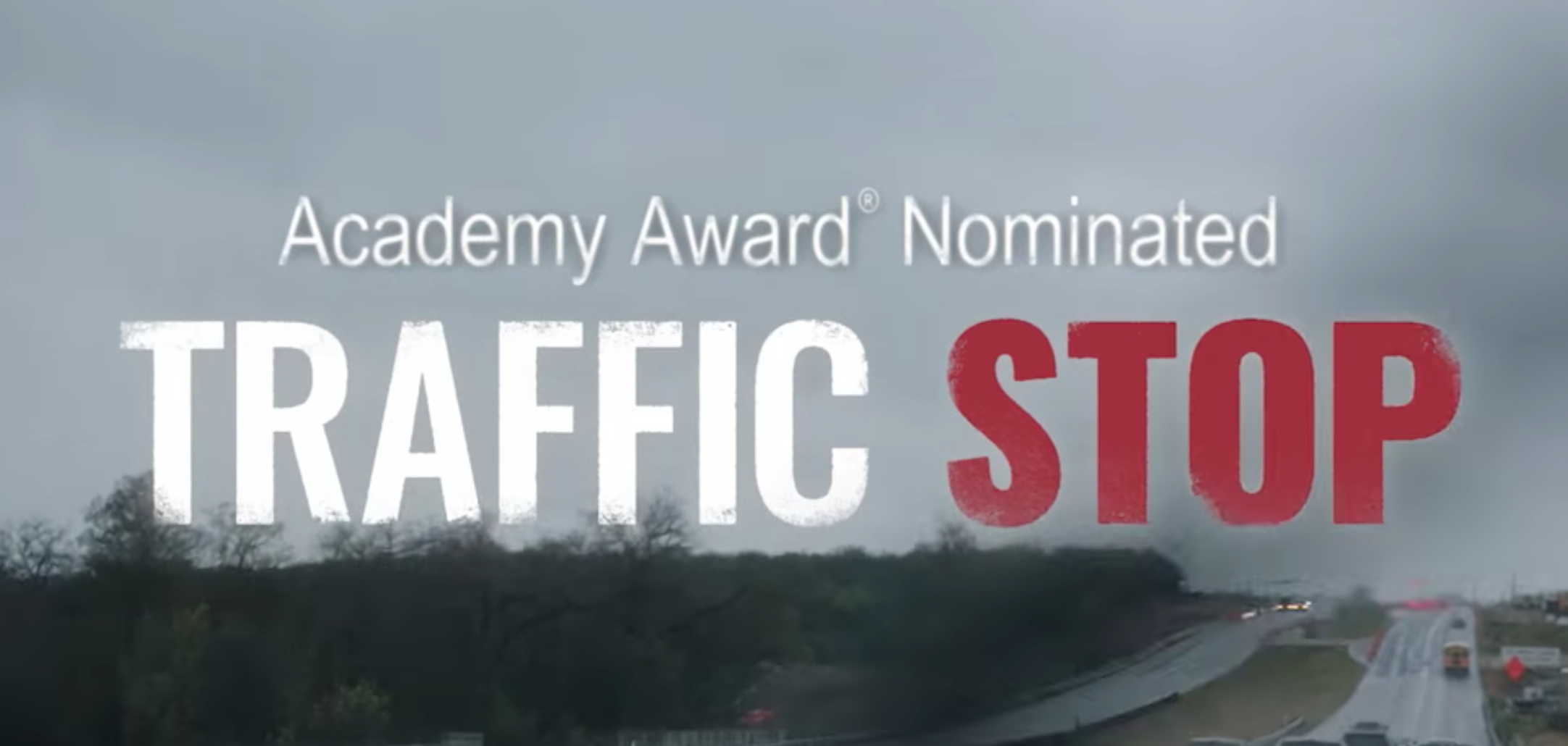After my recent exploration of Brian Grimm’s Racial Taboo, this seemed like a good time to feature additional films and filmmakers that might also allow us to explore ongoing issues in Champaign Urbana, such as the racial disparities in traffic stops. National Geographic magazine also takes up he thorny issue of traffic stops in their recent Race Issue in the story “For Black Motorists, A Never-Ending Fear of Being Stopped.” The film Traffic Stop chronicles a day in the life of Breaion King, an African American school teacher who was stopped for a minor traffic violation in Austin, Texas. Her encounter quickly escalated into a harrowing arrest that was captured by local police dash cams. I had the chance to talk with Kate Davis, one of the film’s directors.
Smile Politely: First of all, Kate, thank you for your willingness to be interviewed.
Part of the reason I wanted to have this conversation with you is because I actually served on the City of Urbana Traffic Stop Data Task Force for 2014-2015. Racial disparity in traffic stops is an issue not only across the country, but where I live as well.
So as a former task force member and local resident, this film and subject is a pretty personal one to me. Recent reporting suggests that the numbers locally are improving, but that efforts to decrease disparities must continue.
So, how did you become involved in this project?
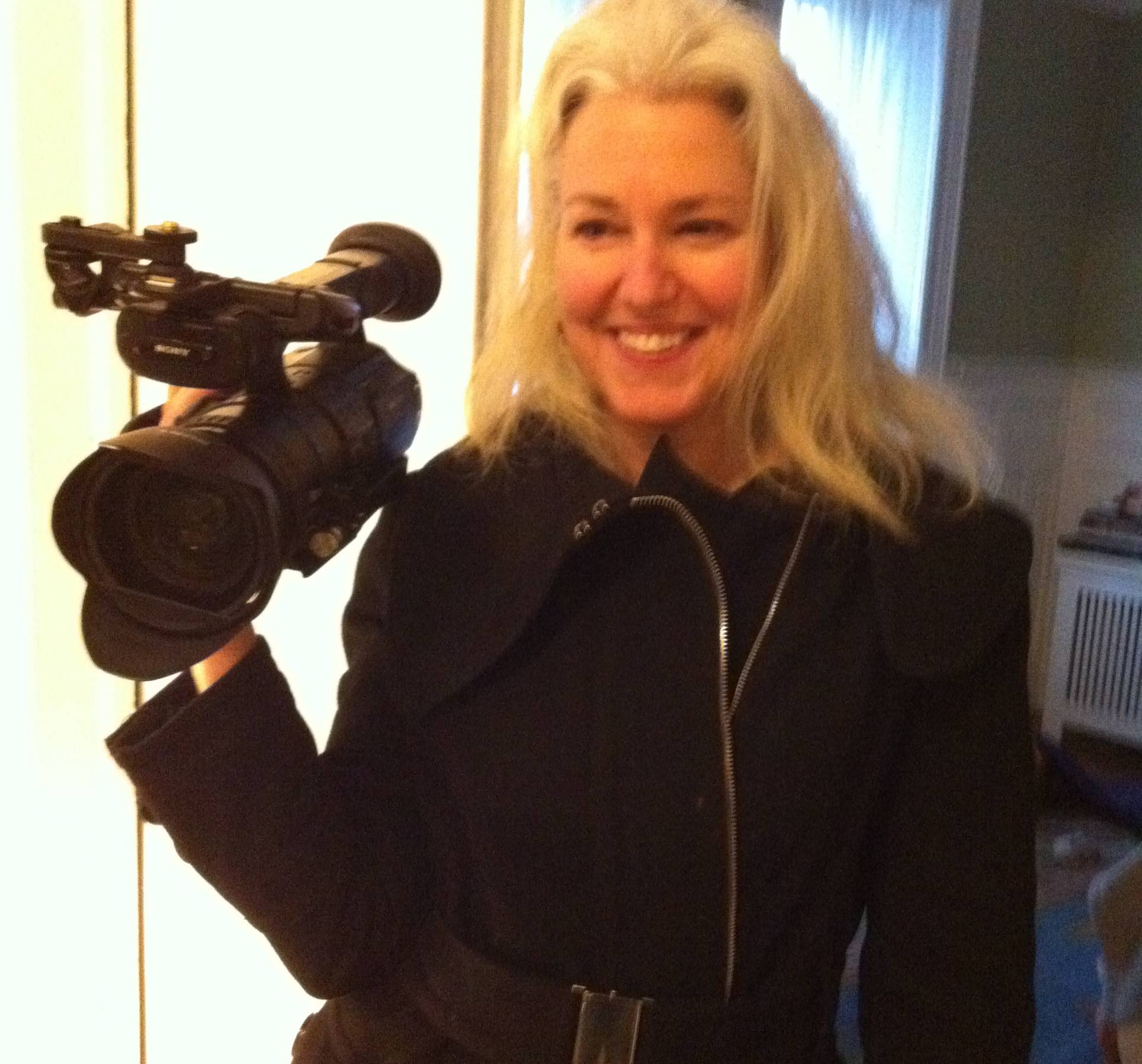 Kate Davis: I had been doing HBO documentaries over the years. And they know as a filmmaker, I am someone who is interested in elevating the voices of people whose life stories may go under the radar. I use documentary film to highlight important stories of folks who we otherwise would not know.
Kate Davis: I had been doing HBO documentaries over the years. And they know as a filmmaker, I am someone who is interested in elevating the voices of people whose life stories may go under the radar. I use documentary film to highlight important stories of folks who we otherwise would not know.
So, Breaion King’s dash cam video went viral, people at HBO saw it, and my senior editor asked me if I’d make a film about it because they felt Breaion deserved a film because this kind of thing goes on all too often.
She’s such a strong person to have the clarity and courage to speak to the officer and ask “Why Me?” and “Why Did This Happen?” And they have the discussion that they had about racism while she was in the back of the squad car. It was just such a surprising day in her life, which was caught on multiple dash cam angles.
So, then, I approached her out of the blue and she did not want the publicity. She was suffering from PTSD of sorts and she really wanted to hide under a rock for a long time. I tried to get that in the film, too: to be treated that way can really knock you down emotionally. So she had to meet with us and she trusted David and me and then she said, “Yeah, I’ll do this.”
She never thought she’d get to the Oscars.
That’s not why she did it at all. That was surreal. So, yeah, that’s how all this happened: HBO approached me.
SP: That’s the real beauty of the film: the way that you mesh the different kinds of 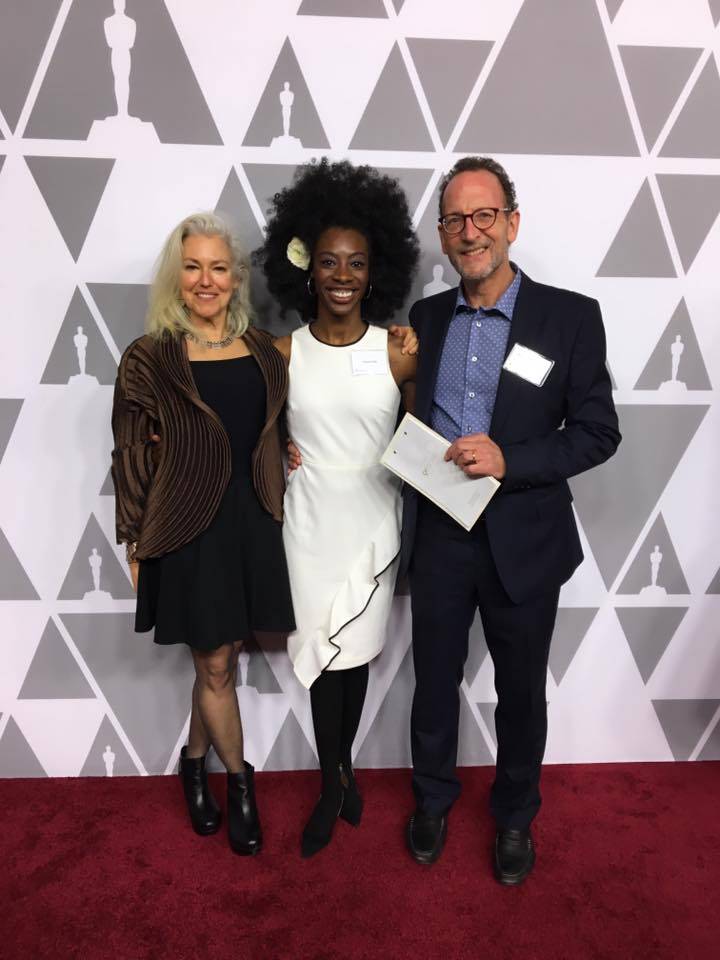 dashcam footage with the story that you tell about her life. It seems that telling King’s story beyond the traffic stop is really the crucial intervention that you make by weaving those two stories so seamlessly to tell a story about this woman’s life.
dashcam footage with the story that you tell about her life. It seems that telling King’s story beyond the traffic stop is really the crucial intervention that you make by weaving those two stories so seamlessly to tell a story about this woman’s life.
So I have to ask: how is she doing now?
Davis: She’s doing well now. Back to teaching. Her students love her. I think you can see that in the footage.
SP: Right.
Davis: She’s so devoted to helping her kids. Believing in them and lifting their self-esteem with that strong backbone that Breaion herself has. It’s that strength that I think really saved her. Breaion’s strong backbone kept her in the face of a system that is cold and dehumanizing, to put it mildly. Not every cop by any means would do this. And Breaion says this in the film. She was just going through a random day when her life changed.
So, how is she today? I think she is strong. I think the process of making the film was therapeutic for her. Turning something really bad into something good. Hoping the film would educate people and get people talking.
We have an outreach plan to take this film to high schools, colleges, being present for special screenings where Breaion could be present or I could be present to talk with people of influence: women’s groups, minority groups, law enforcement. So, this is just the beginning of using the film to help us create a dialogue about police overreach and racism gone unchecked.
SP: The thing that is so amazing about the project is something that I have never considered — to hear someone talk about how their public image has changed. She discusses the progression of seeing herself online in a positive light as a model, as a performer, as an artist.
And now, on the other side of this police encounter, she is now seeing herself in mug shots and in his horrific footage.
Davis: Isn’t that amazing?
SP: And the amazing thing about the film is that we don’t even think about the social media legacy and the online footprint that endures as a result of these incidents.
Davis: Right. So those who have been killed don’t live with this media stigma…but their families do.
Yeah, yeah, I was really shocked. I did not expect this issue to surface. So, I was really surprised when she started talking about this issue. Oh yeah, these days with this technology, you can get in trouble with the law and it can disrupt your prospects for your work life forever because you can’t take that history away.
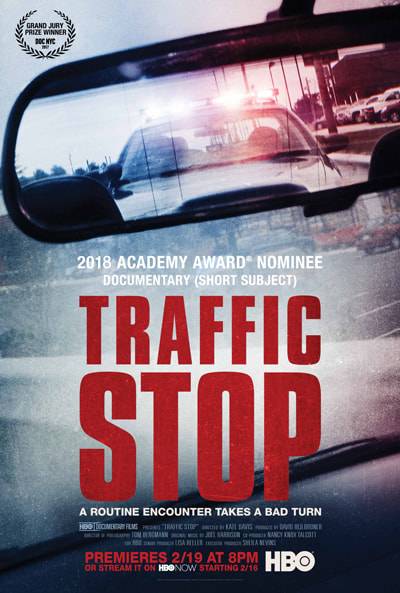 SP: This incident happened one month before Sandra Bland was arrested — which itself was astonishing. I’m curious to know if you screened this film in Austin and what the reception was like.
SP: This incident happened one month before Sandra Bland was arrested — which itself was astonishing. I’m curious to know if you screened this film in Austin and what the reception was like.
Davis: We have not screened it there yet — except for the broadcasts on HBO.
So, no, we haven’t had a special screening of it there yet. I hope we can do it in Austin as we have not heard from the law enforcement side.
SP: What’s so interesting though is that we have this African American woman who has this horrific experience with Officer Bryan Richter and his colleagues. Then, just last week, we have African Americans dealing with these bombing incidents in Austin and the hesitation of law enforcement to label these incidents acts of terrorism.
I just seems that this would be a ripe moment to have this film included in a broader discussion about race and policing that Austin may want to grapple with.
Davis: It should be. We’ve just got to first set up a special screening to get law enforcement to engage and interact with people of color and the public around these issues.
My intention was to get all kinds of people from different walks of life to realize that nobody is immune from this, if this can happen to a school teacher one afternoon on her lunch break.
So, I thought if we can just humanize her and make Breaion come to life — because as you said — a lot of people who the public comes to know are killed, and we don’t have a sense of who they are as people.
I mean, I didn’t know what Eric Garner was like. I don’t really know who Trayvon Martin was in any close up way. For some people, they were just statistics and even if you are a caring, concerned person you don’t know them.
So with Breaion, she had the courage to go on film — so that we could help break down that wall. She’s not just a statistic…she is a person, of course everybody is. Humanizing her is part of what her story can do that others’ stories can’t do as effectively. You watch her dance and teach and talk about her childhood and being treated differently.
SP: This film is also a way to understand that people bring their life struggles to these encounters as well, right? She is someone who has had life struggles, lost a parent….
Davis: Mmm-Hmmm. Mmm-Hmmm.
SP: Then, to watch her go from this calm, composed, confident educator and dancer…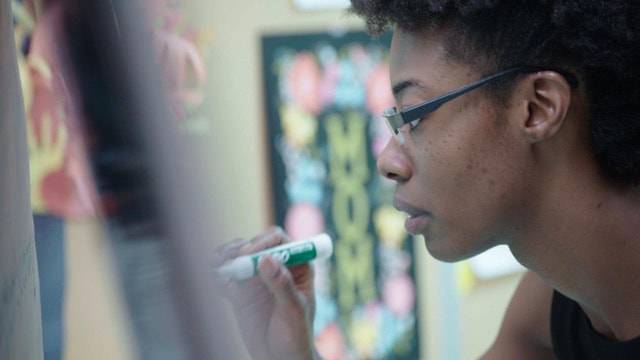 to then…her demeanor with the police officer is so different.
to then…her demeanor with the police officer is so different.
Davis: Mmm-Hmm.
SP: It helps you really understand what this treatment brings out …the fear…the anxiety…memories of other encounters that she has seen… and this is what law enforcement have to gain from seeing this encounter in contrast to her daily life as a teacher, churchgoer, auntie…she is a full human being.
Davis: That is really interesting that you talk about her striking you as a really righteous person. So what are the cops filling in? When that cop sees her, what is he putting on her?What is he assuming about her that he may not even be aware of? Who is she imagining that Breaion is? That is what you have to question. The cops have to look inside themselves and ask the question: What am I bringing to this incident?
And I think for young African Americans, young kids feel, in general, more vulnerable. That is why they get “the talk”, right? They have to be careful when they are pulled over if you say the wrong thing….what am I saying…if you say something that this cop doesn’t like, you could be dead. We’ve seen that on cellphone video.
I think it’s also important for young drivers [to know] they are going to get pulled over for nothing. It’s going to happen. It’s not going to happen to me, but it’s going to happen to people all the time every day. As so, how are people of color going to react to save their lives?
Look at Breaion — she wasn’t perfect. I agree with you, fear kicked in and people can mistake her actions as antagonistic. But, she comes into this situation with a history of being undervalued. So each one of them — Breaion and the cop — bring their history to this charged situation. Consequently, I am so hoping that the film can help everyone dissect where things go south and why and how could it have been handled differently.
SP: Absolutely. That’s what is so fascinating about this encounter. She brings the experience of being black, being female, being surveilled to the experience. What is the officer bringing? Because even after she is arrested, the officer says “she’s a skinny lil’ thing,” acknowledging the fact that she is a tiny person.
Davis: And the fact that the officer is what 250 pounds? So the idea that she took a swing at him. We never see that. So, also the idea that he has to protect himself is really outrageous. I think it was just his cover because he didn’t know what else to say to protect himself. Something seemed to be coming up where he was being triggered by her because of her gender and her race.
It is harder for a black woman to assert her rights…you know like Sandra Bland…assert her rights to a macho guy in a very male-dominated profession based on power and dominating others.
SP: My husband mentioned an article “Study Finds That Police Are More Likely to Use Force Against Higher Income Black Women,” reporting that educated and affluent black women who challenge racially discriminatory policing are more likely to have negative encounters with law enforcement. It seems the research applies to both Sandra Bland and Breaion King.
Davis: I guess you have to — to a certain extent — to dominate the person you are pulling over. But he is really easily triggered. This same cop that Breaion encountered has recently been fired for kicking a Hispanic man in the head that he arrested and interacted with in a very abusive manner. I think that there was so much attention on Breaion’s case the police force couldn’t let this one go.
SP: But the police union is appealing his firing.
Davis: Did it strike you that the officer driving her to jail is trying to honestly explain to her that it is black people who have the violent tendencies?
SP: Well, for me, it’s a nightmarish kind of honesty. The fact that footage of this conversation exists is profound. Her conversation with the officer is revealing because the conversation totally ignores the violence done to her. This conversation ignores King’s power versus the officer’s power in the situation. It just seems that — far too often, whether it is fear of Stephon Clark’s cellphone or Mike Brown’s hands — in altercations like this black bodies must be broken, destroyed, not just contained. And the fact that she is a dancer makes this encounter that much more challenging to watch and consider.
Davis: Yes, it does seem that the mentality is that ”you have to take them down…you have to take them out…because these people are just that alarming.” And I agree that the cop has to protect himself, but does it have to be taken to such a crazy extreme…like shooting someone 20 times for a cellphone?
SP: That’s right. But this is what is astonishing to me: that— after this violent encounter —King still had the presence of mind to have a conversation with the officer driving her to jail.
Her courage in that situation amazes me…because after all that had happened at the side of her car, I think I just would have gone limp in the back of that car.
Davis: Totally. I agree totally. I mean, she didn’t just jump up…she didn’t freak out…she was just calm and open to listening to the officer. She’s incredible. Breaion’s great. If that had happened to me, I too, would have been a mess.
SP: It’s like she found a calm and a resolve within herself to figure out…I don’t know if she was trying to have this conversation to document a mentality among the police…or if she was trying to preserve her own humanity…or both.
Davis: I agree.
To learn about this project and Kate Davis’ other projects, check out her website.
Photos from Facebook and courtesy of Kate Davis.
Nicole Anderson Cobb, PhD, is a four-time-UIUC alum.








